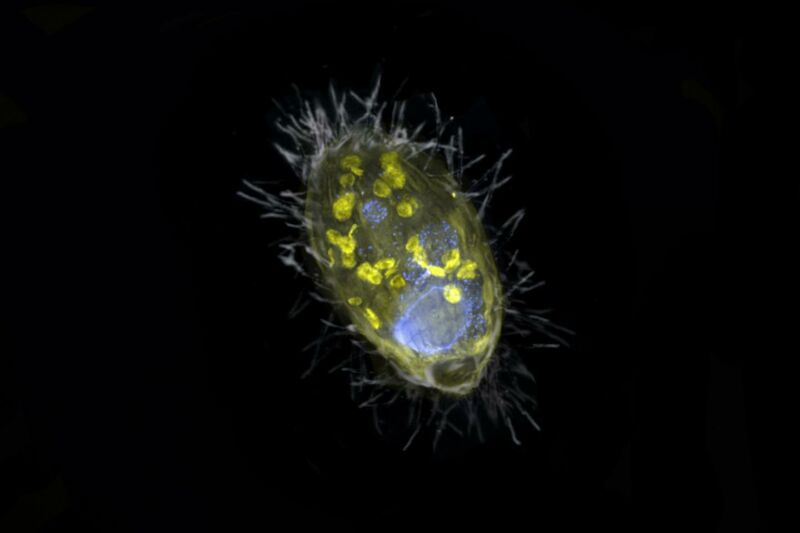
Enlarge / The bacteria (yellow) live inside a larger eukaryotic cell. (credit: MAX PLANCK INSTITUTE FOR MARINE MICROBIOLOGY)
Deep in Switzerland’s Lake Zug swims a microorganism that has evolved a strange way to “breathe.” A team of researchers discovered a novel partnership between a single-celled eukaryote—an organism with a clearly defined nucleus holding its genome—and a bacteria that generates energy for its host. But instead of using oxygen to do so, it uses nitrate.
“This is a very weird, [newly discovered] organism,” said Jana Milucka, a biologist at the Max Planck Genome Center in Cologne and senior author on the resulting paper, published in Nature in early March.
The team named the bacteria Candidatus Azoamicus ciliaticola, meaning “nitrogen-friend that lives inside a ciliate.” Its partner, the ciliate, is a microorganism that moves around using cilia, tiny hair-like protrusions outside their cell walls. The host organism is part of a group of ciliates called Plagiopylea.





